Birds are one of the most common and beloved creatures that inhabit the Marina. From seagulls to hummingbirds, the Marina is home to a wide variety of species.
Whether you are admiring them from afar or getting up close and personal, there’s something special about bird watching.
From the delicate beauty of a hummingbird to the majestic beauty of a bald eagle, bird watching in the Marina provides a unique window into the world of wildlife. Enjoy the sights and sounds of the many birds that call the Marina home.
1. Great Egret
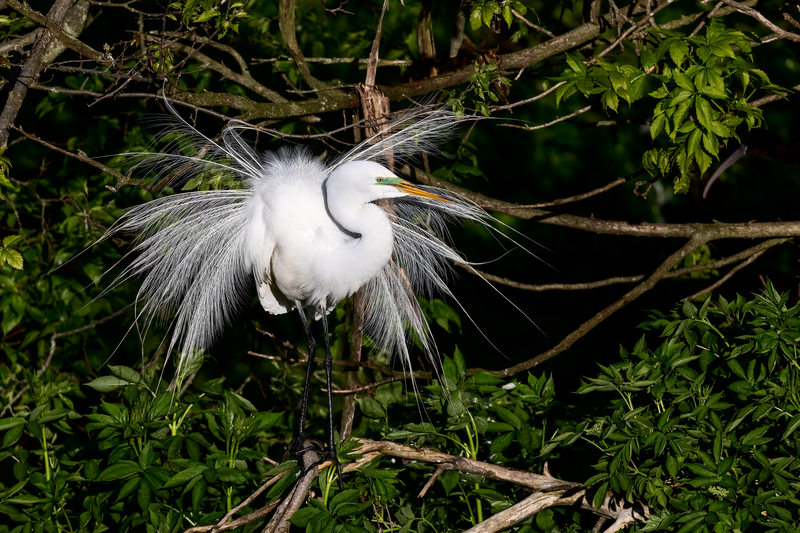
The great egret is an impressive bird with a wide range of habitats. It is also known by many different names, such as the common egret, large egret, great white egret, and great white heron.
This bird is found in many regions, including Asia, Africa, the Americas, and southern Europe. In recent years, it has been seen in more northern areas of Europe as well.The great egret is a large bird, with a wingspan of up to five feet.
It is mainly white in color, with a yellow bill and black legs. Its habitat mainly consists of wetlands, such as marshes, shallow lagoons, and estuaries.
It is a solitary bird, rarely seen in groups, and prefers to feed alone. The great egret is an important species for its role in the environment. It feeds on many small fish, frogs, and other aquatic creatures, helping to maintain the balance of the ecosystem.
It is also a valuable food source for other animals, such as large birds of prey and predatory mammals. The great egret is a species of conservation concern in many parts of the world, due to habitat loss, pollution, and hunting.
It is listed as vulnerable in some areas and endangered in others. Conservation efforts are necessary to ensure that the great egret can continue to thrive in its natural habitats.
| Kingdom | Animalia |
| Phylum | Chordata |
| Class | Aves |
| Order | Pelecaniformes |
| Family | Ardeidae |
| Genus | Ardea |
| Species | A. alba |
2. Grey Heron
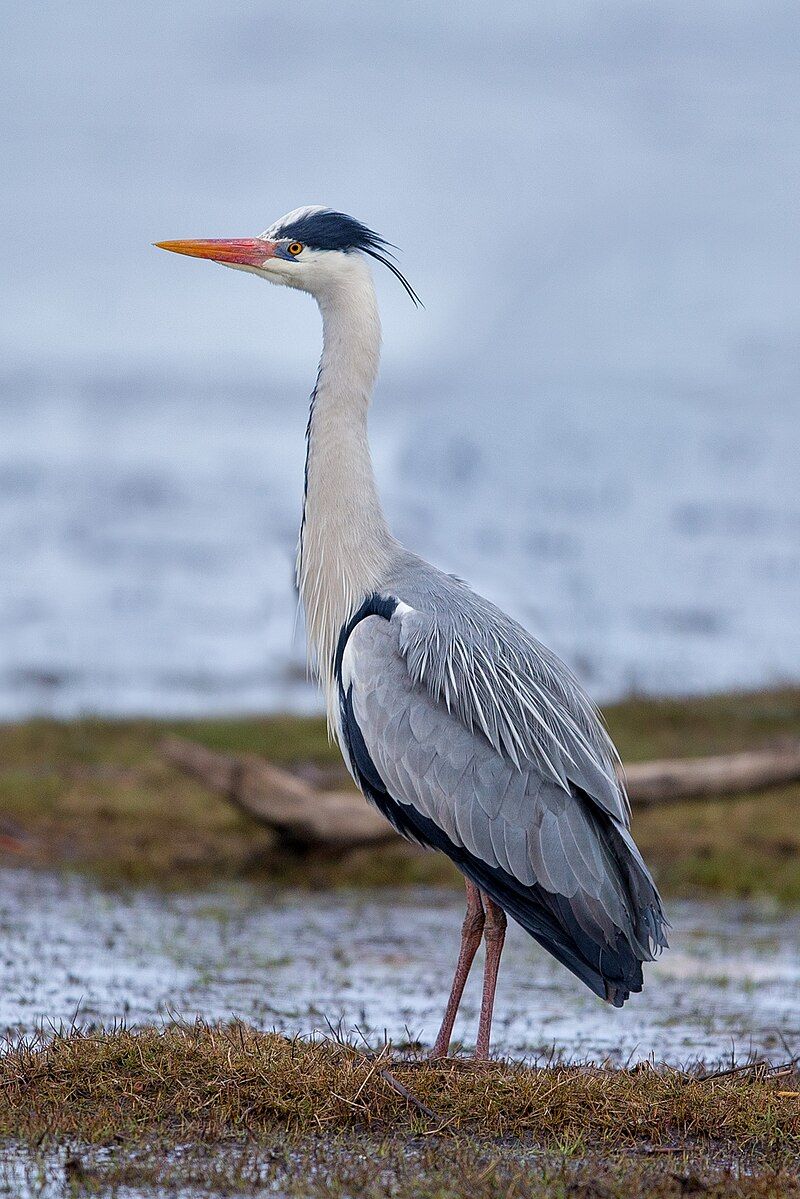
The Grey Heron is a long-legged bird belonging to the heron family, Ardeidae. It is a native species of temperate regions in Europe, Asia, and parts of Africa.
This species is known to be resident in a majority of its range, however, some of the northern populations migrate south during the autumn season. This bird has a long and slender neck, and its wingspan averages between 1.1 to 1.3 meters.
It is a solitary bird, mainly feeding on fish and other aquatic creatures. It is most commonly seen along the edges of wetlands, rivers, and lakes. The Grey Heron is a greyish-blue bird with white or yellowish plumes around its neck and back.
They are also known to breed in colonies near water bodies, and the nest is usually made out of sticks and twigs. The Grey Heron is an important species of bird, and its presence is a good indicator of healthy ecosystems.
| Kingdom | Animalia |
| Phylum | Chordata |
| Class | Aves |
| Order | Pelecaniformes |
| Family | Ardeidae |
| Genus | Ardea |
| Species | A. cinerea |
3. Brown Pelican
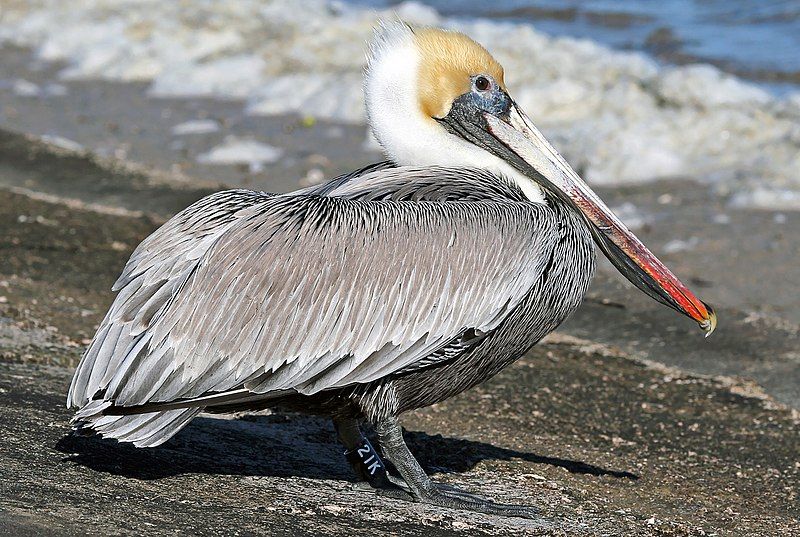
The brown pelican is a species of the pelican family, Pelecanidae, which is found in the Americas. It is one of three species of the family that is found in the Americas, and one of two species that feed by diving into the water.
This species is renowned for its unique and distinctive feeding technique, where it dives into the water and catches fish with its large pouch-like bill.
The brown pelican is also an important species to keep an eye on, as it is listed as a species of special concern in the United States and is considered threatened in some parts of its range.
As a result, conservation efforts have been put in place in order to protect this species and its habitat.
| Kingdom | Animalia |
| Phylum | Chordata |
| Class | Aves |
| Order | Pelecaniformes |
| Family | Pelecanidae |
| Genus | Pelecanus |
| Species | P. occidentalis |
4. Sanderling
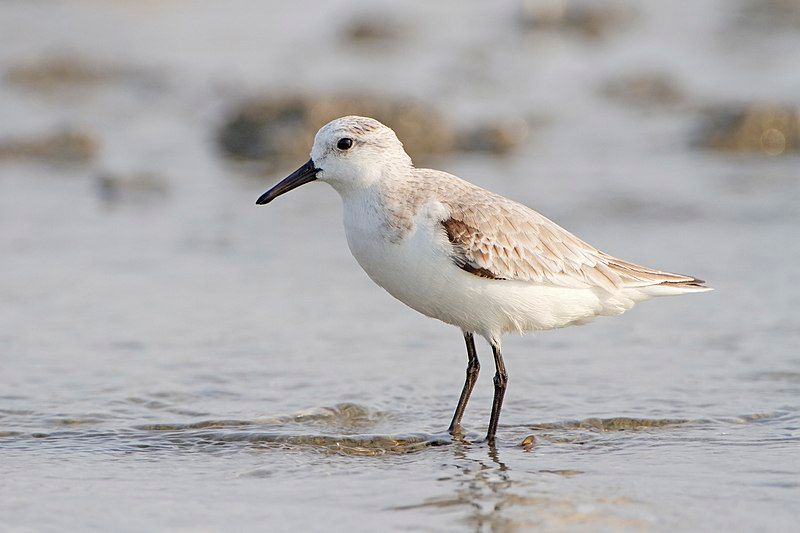
The sanderling is a small wading bird that has a unique name. The name comes from an Old English term, which is “sand-yrðling” or “sand-ploughman”. Additionally, the genus name for this bird is derived from Ancient Greek and is either “kalidris” or “skalidris”.
This term was used by Aristotle to refer to some grey-colored waterside birds. Finally, the specific name for this bird is “alba”, which is Latin for “white”.
Overall, the sanderling is a small wading bird with a name derived from Old English, a genus name derived from Ancient Greek, and a specific name derived from Latin. This unique combination of language origins is a testament to the long history of this bird.
| Kingdom | Animalia |
| Phylum | Chordata |
| Class | Aves |
| Order | Charadriiformes |
| Family | Scolopacidae |
| Genus | Calidris |
| Species | C. alba |
5. Mallard
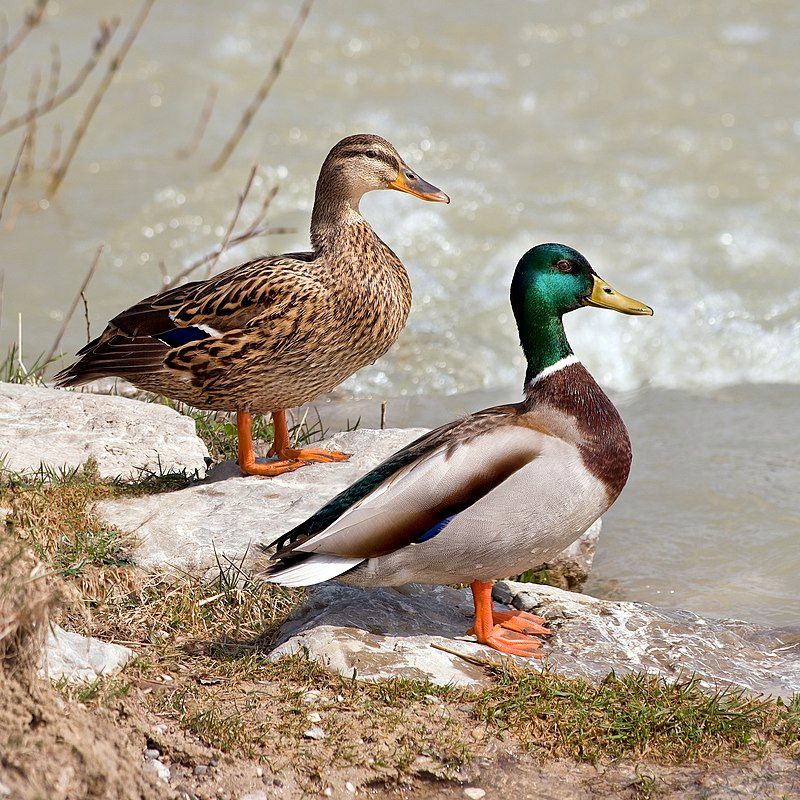
The mallard or wild duck is an abundant species of duck that can be found in many different regions of the world. It is a dabbling duck, meaning that it feeds mainly on the surface of lakes and ponds, rather than diving down for food.
This species is native to temperate and subtropical regions of the Americas, Eurasia, and North Africa.
It has been introduced to other parts of the world, such as New Zealand, Australia, Peru, Brazil, Uruguay, Argentina, Chile, Colombia, the Falkland Islands, and South Africa. The Mallard is well-adapted to survive in a wide range of habitats, from wetland areas to woodlands and semi-arid regions.
It is known to feed on invertebrates, aquatic vegetation, and even small mammals and amphibians. It is an important species for hunters as well, as it is a popular game bird in many parts of the world.
Its introduction to new regions has resulted in some negative impacts on local ecosystems, such as competing with native waterfowl for food and habitat.
| Kingdom | Animalia |
| Phylum | Chordata |
| Class | Aves |
| Order | Anseriformes |
| Family | Anatidae |
| Genus | Anas |
| Species | A. platyrhynchos |
6. American Coot
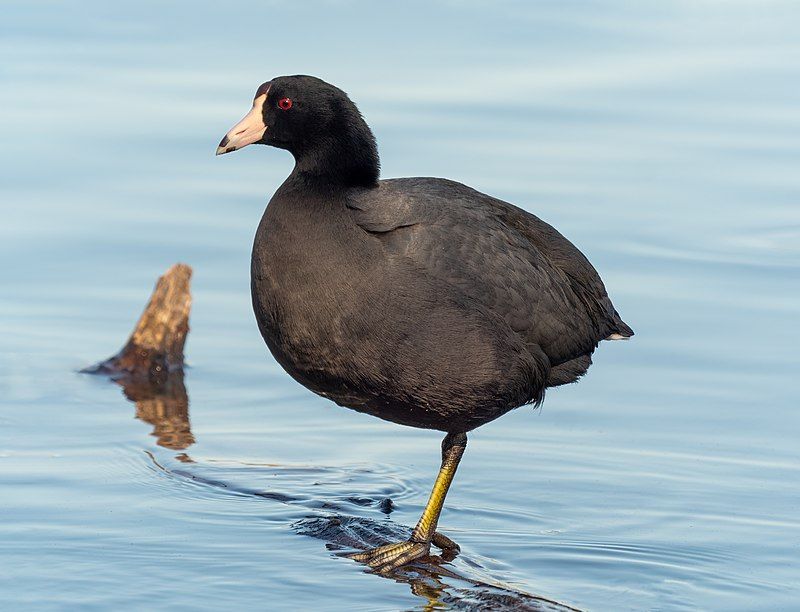
The American Coot is a bird belonging to the Rallidae family, which is commonly mistaken for a duck. These birds, however, are only distantly related to ducks and actually belong to a different order. The American Coot is also referred to as a mud hen or pouldeau.
These birds have a distinctive appearance, with a white beak and bill, a grey-blue body, and a chestnut-brown head. They also have a white patch on their wings and a black tail.
American coots are found in marshes, ponds, and lakes, and they are particularly abundant in the eastern United States and Canada. American coots are omnivorous, meaning they will eat both plants and animals.
They primarily consume aquatic vegetation, aquatic insects, and crustaceans. They are also known to consume small fish, frogs, and snails.
American coots are also known to forage on land, where they will eat seeds, grains, and other plants. These birds are social creatures and are often seen in large groups.
They will also form monogamous pairs during the breeding season, during which they will build a nest near the edge of the water and lay up to nine eggs. The female will incubate the eggs for about three weeks, while the male will guard the nest.
After the eggs hatch, the chicks will stay with their parents for up to three months. The American coot is an important species in the wetland ecosystem, as it helps to control the population of aquatic insects and other prey, which can help to keep the water clean.
They are also an important food source for many predators, including hawks, owls, and other birds of prey. As a result, they are protected by law in many areas.
| Kingdom | Animalia |
| Phylum | Chordata |
| Class | Aves |
| Order | Gruiformes |
| Family | Rallidae |
| Genus | Fulica |
| Species | F. americana |
7. Willet
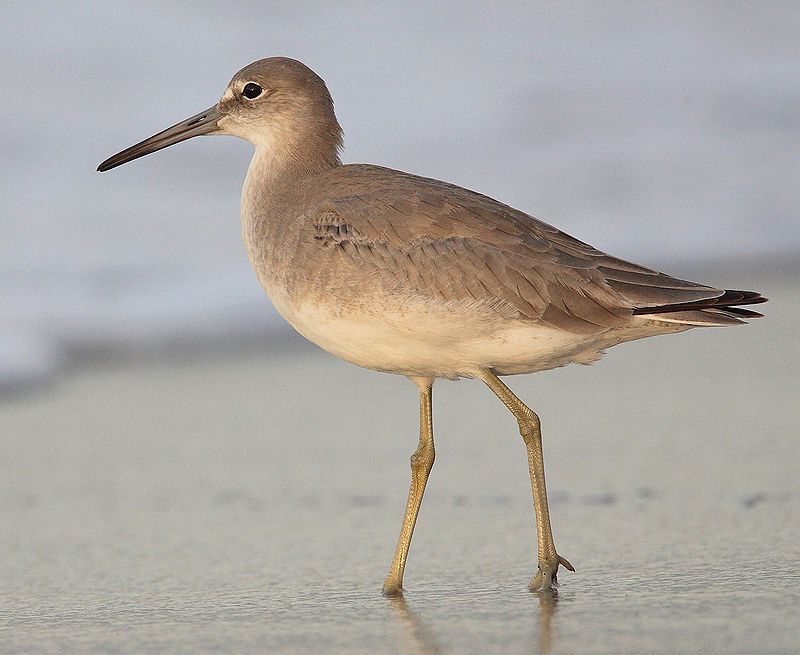
The willet is a species of shorebird belonging to the Scolopacidae family, which also includes sandpipers. It is a large bird, with a robust body, and is the largest of the Tringa genus, commonly known as ‘shanks’.
Willets have a broad wingspan, usually somewhere between 60 to 70 cm, and their bodies measure approximately 30 to 40 cm long. They have a distinctive black and white striped pattern on their wings, making them easily recognizable in flight.
The underside of their bodies is white, with a black patch on their tail. Their legs are grey, and their beaks are dark. Willets are found along the coasts of North America, from Canada to Mexico, as well as in parts of South America.
They feed mainly on small invertebrates, such as worms, mollusks, and crustaceans, which they find in the sand or mud along the shoreline. During the breeding season, they migrate to the Great Lakes and the Atlantic coast.
They typically nest in small depressions on the ground, lined with grass and other vegetation. Willets are a great example of the diversity of shorebirds and provide an important role in the environment by helping to keep the shoreline clean.
| Kingdom | Animalia |
| Phylum | Chordata |
| Class | Aves |
| Order | Charadriiformes |
| Family | Scolopacidae |
| Genus | Tringa |
| Species | T. semipalmata |
8. Osprey
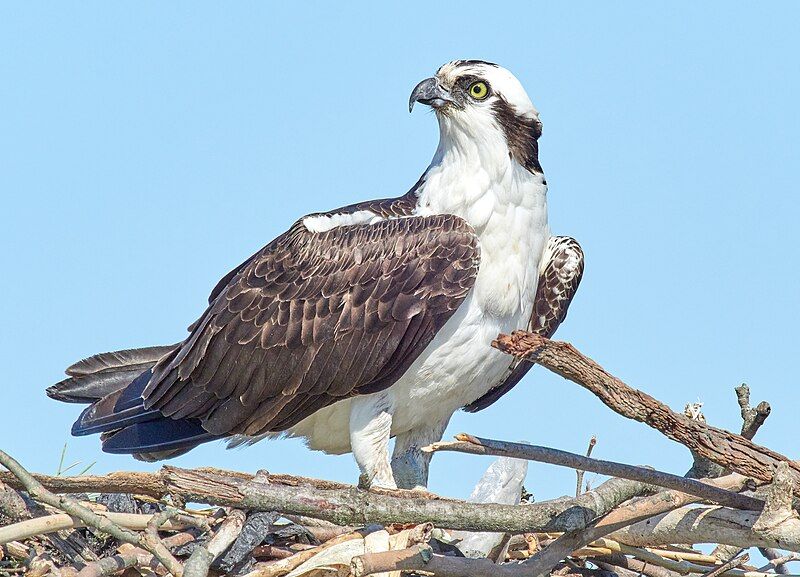
The Osprey is a bird of prey that is found all over the world. It is also known as the sea hawk, river hawk, and fish hawk, due to its diet that consists mainly of fish. It is a large bird, measuring 60 cm in length and having a wingspan of up to 180 cm.
The osprey has a brown coloration on its upperparts, while its head and underparts are mainly grey. It is a diurnal bird, meaning it is mostly active during the day.
This species of raptor is specialized in catching fish, and it is sometimes seen hovering above water in order to spot its prey. It is a magnificent sight to see, and it serves as an impressive example of the success of birds of prey in the wild.
| Kingdom | Animalia |
| Phylum | Chordata |
| Class | Aves |
| Order | Accipitriformes |
| Family | Pandionidae |
| Genus | Pandion |
| Species | P. haliaetus |
9. Terns
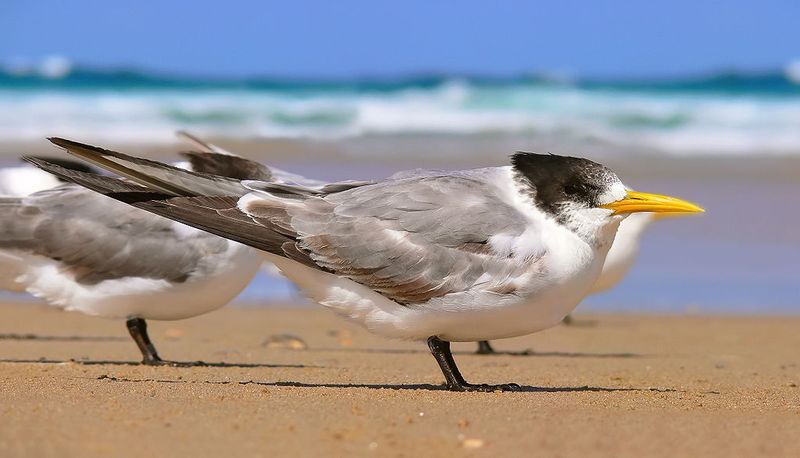
Terns are seabirds belonging to the family Laridae, which is a group of birds that have a global distribution and are usually found near coastal areas, rivers, or wetlands.
They are considered to be a subgroup of the Laridae family, which includes gulls and skimmers and contains eleven distinct genera. Terns are typically characterized by their long, pointed wings, and forked tails.
They feed mainly on small fish and other aquatic creatures, and they are often seen hovering over the water in search of food. They are also known to nest in colonies, which are usually found near the shores of lakes or oceans.
Terns are an important part of the ecosystem, as they help to control the populations of aquatic organisms, and they are also important in providing food for predators.
| Kingdom | Animalia |
| Phylum | Chordata |
| Class | Aves |
| Order | Charadriiformes |
| Family | Laridae |
10. Heron
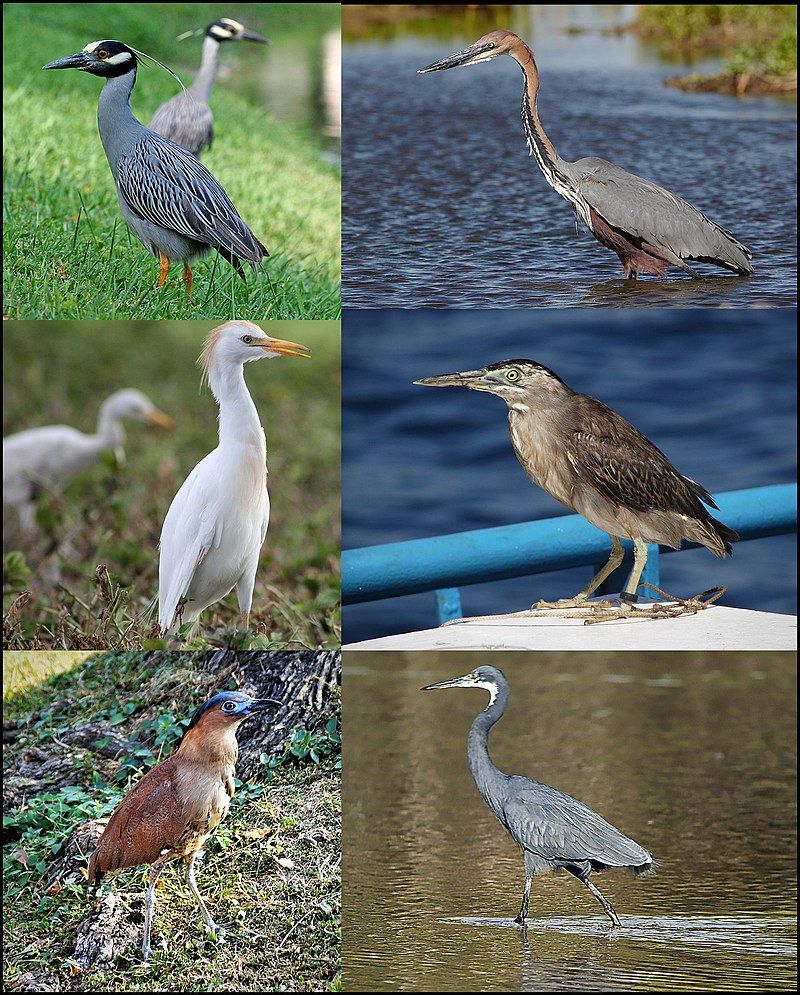
Herons are a diverse group of birds found in both fresh and saltwater habitats. They are found in the family Ardeidae, which includes 72 species of birds. Herons are characterized by their long legs and necks, and they are usually gray or white in color.
Some species of herons are referred to as egrets or bitterns, but they are all part of the same family. Herons can be found wading in shallow waters, searching for fish, frogs, and other small aquatic animals.
They are also excellent at catching insects on the wing, and they are often seen standing still in one spot, waiting for their prey. Herons are also known for their elaborate courtship displays, which can include a variety of postures and vocalizations.
Though they are solitary hunters, herons can often be seen in large groups in the winter months, when they migrate to warmer climates.
| Kingdom | Animalia |
| Phylum | Chordata |
| Class | Aves |
| Order | Pelecaniformes |
| Family | Ardeidae |
11. Marbled Godwit
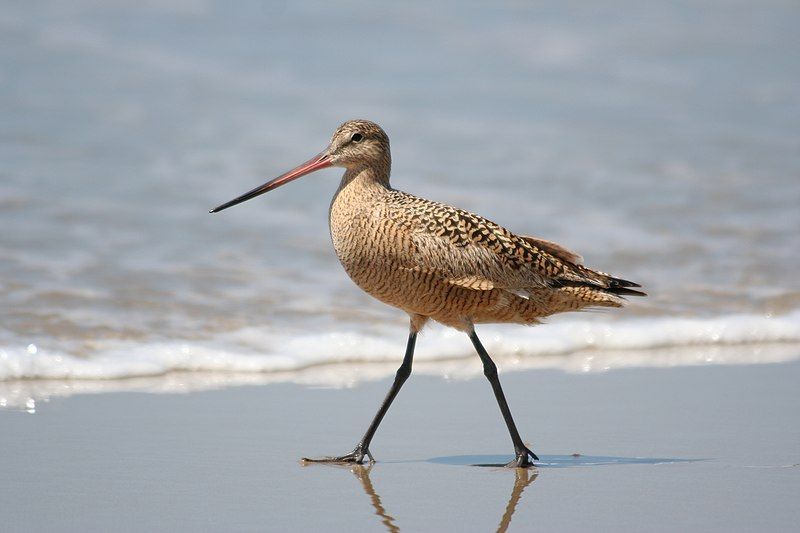
The marbled godwit is a species of migratory shorebird that belongs to the family Scolopacidae. This species of bird is known for its large size, and in comparison to the other three species of godwits, the marbled godwit is the largest in size.
It is believed to migrate from its breeding grounds in Alaska and Canada to the coasts of South America for winter, making it a species of long-distance migration.
The marbled godwit is also a distinctive species due to its unique white barring on its back and wings and its white underbelly. It primarily feeds on worms, insects, and mollusks, which it finds along shorelines and in wet meadows.
As well as being the largest species of godwit, it is also one of the longest-distance migrants of shorebirds, making it an important species within its family.
| Kingdom | Animalia |
| Phylum | Chordata |
| Class | Aves |
| Order | Charadriiformes |
| Family | Scolopacidae |
| Genus | Limosa |
| Species | L. fedoa |
12. Black-Necked Stilt
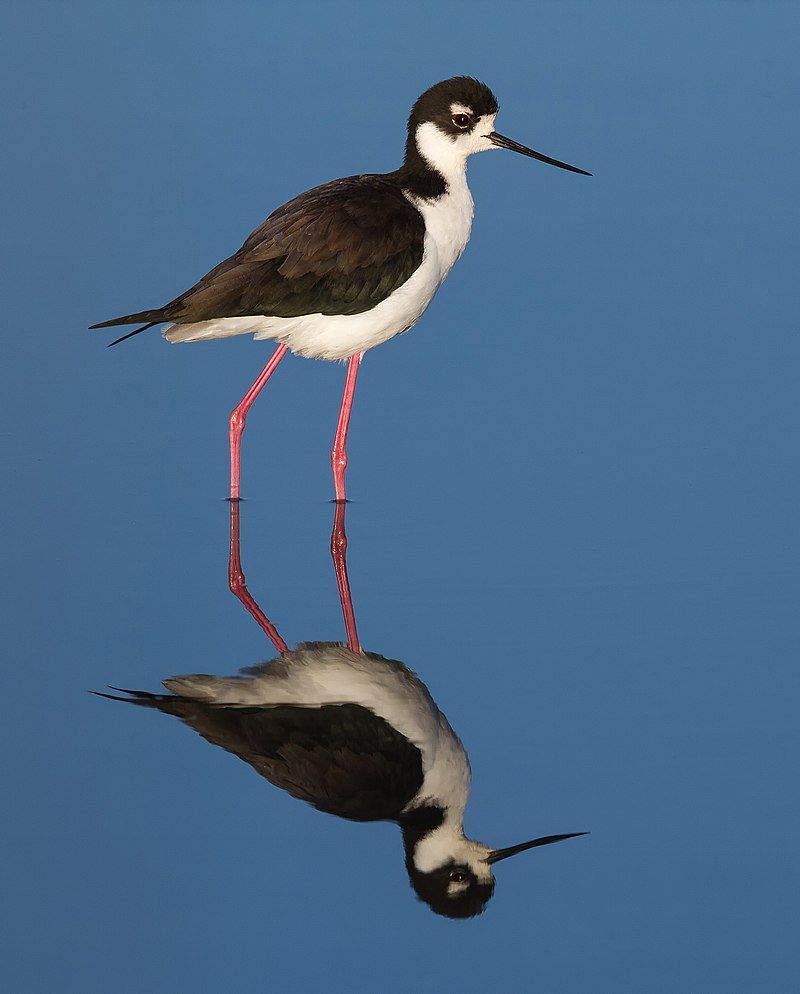
The black-necked stilt is a species of shorebird that can be found in wetlands and coastal areas across many parts of the United States. It is most common in California, but also inhabits parts of the interior western United States.
This bird is known for its long, thin black legs, and a distinctive black neck that contrasts with its white body.
It is a relatively large shorebird, with a wingspan of around 30 inches. Black-necked stilts are found in a variety of wetland habitats, including shallow lakes, rivers, streams, marshes, and coastal lagoons.
They prefer areas with shallow water and muddy, sandy bottoms, and are often seen foraging in the shallows for food.
Their diet consists of small invertebrates, including insects, crustaceans, and mollusks, which they catch while wading in the water. Black-necked stilts are social birds, and can often be seen in large flocks.
During the breeding season, they form large colonies, with nests spaced closely together. The birds use their long legs to build their nests, which are often made of a combination of vegetation and mud.
They lay around four eggs, which are incubated by both parents for around three weeks. The black-necked stilt is an important part of the American wetlands ecosystem.
Its presence is an indicator of healthy wetland habitats, and it is an important food source for other birds and animals.
Unfortunately, habitat destruction and pollution have caused a decline in the black-necked stilt population, and it is now listed as a species of conservation concern in the United States.
| Kingdom | Animalia |
| Phylum | Chordata |
| Class | Aves |
| Order | Charadriiformes |
| Family | Recurvirostridae |
| Genus | Himantopus |
| Species | H. mexicanus |
13. House Sparrow
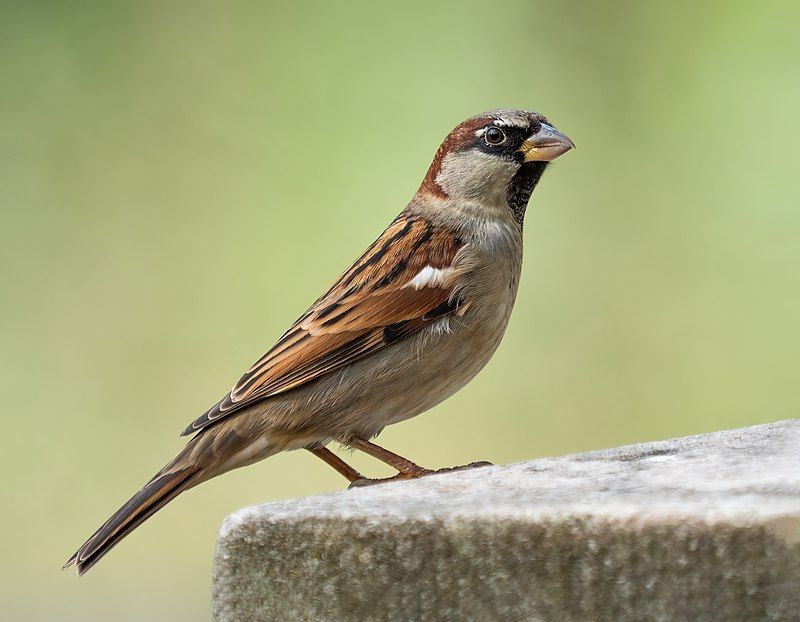
The house sparrow is a small bird that is part of the sparrow family Passeridae. It is found in many parts of the world and has an average length of 16 cm and a mass of 24-39.5 g.
The color of the females and young birds is usually pale brown and grey, while males have more vibrant black, white, and brown markings. These birds have adapted well to living in human-altered habitats such as urban areas, agricultural lands, and suburban gardens.
They feed on a wide variety of foods, including seeds, insects, and fruits. The house sparrow is considered to be a successful species, with an estimated global population of over 500 million individuals. This species is a popular pet bird and is often kept in aviaries or cages.
Despite this, they are still threatened by human activities such as urbanization, agricultural intensification, and the use of pesticides. Conservation efforts are needed to ensure the continued survival of this species.
| Kingdom | Animalia |
| Phylum | Chordata |
| Class | Aves |
| Order | Passeriformes |
| Family | Passeridae |
| Genus | Passer |
| Species | P. domesticus |
14. Common Tern
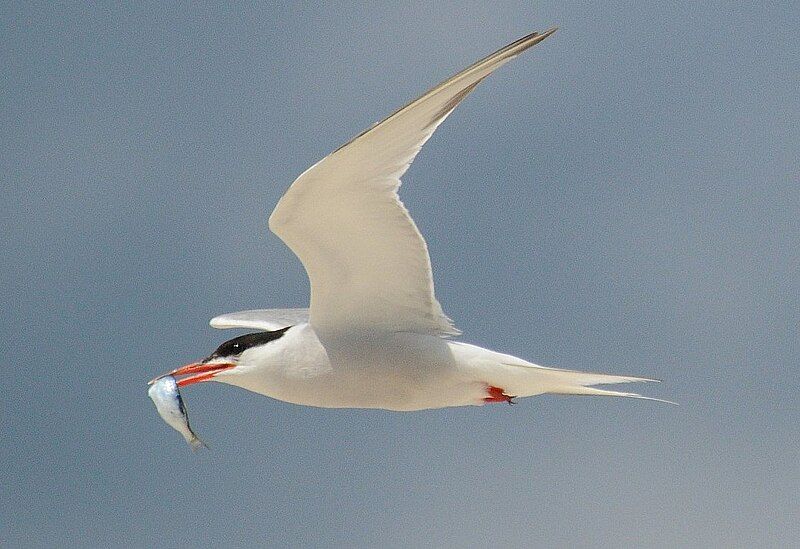
The common tern is a seabird of the family Laridae and is found in many parts of the world. It has four subspecies which breed in temperate and subarctic regions of Europe, Asia, and North America.
This bird is strongly migratory, meaning that it migrates seasonally to warmer, coastal tropical and subtropical regions in the winter. The common tern has a wide range of habitats, found in a variety of coastal areas, from large freshwater lakes to salt marshes.
It feeds mainly on small fish, which it catches while flying over the water. The common tern has a distinctive black cap, white cheeks, and forehead, black wings, and a white underside. It is a social bird, typically found in large flocks.
It nests on the ground, often in colonies along the shore. The common tern is an important species to coastal ecosystems and is an indicator of the health of its habitat.
| Kingdom | Animalia |
| Phylum | Chordata |
| Class | Aves |
| Order | Charadriiformes |
| Family | Laridae |
| Genus | Sterna |
| Species | S. hirundo |
15. Cape Sparrow
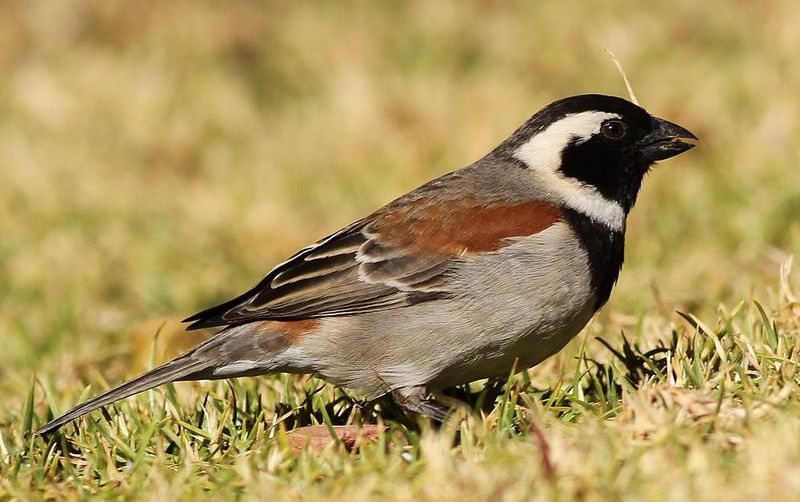
The Cape sparrow, or mossie, is a species of bird belonging to the Passeridae family of sparrows found in southern Africa. It is a medium-sized bird, measuring around 14–16 centimetres in length, and it has a distinct plumage which can be used to easily identify the species.
The most prominent feature of the Cape sparrow is the large pale head stripes which are present in both males and females. This is a unique trait of the species, and it helps to differentiate it from other species of sparrows.
The Cape sparrow is also known for its bright yellow and white underside which is often contrasted with its more muted brown and grey upper feathers. These colours help to camouflage the bird from predators, as it can blend in with its surroundings more easily.
The Cape sparrow is an important species of bird in southern Africa, and it plays a vital role in the region’s food chain by providing insects and other small animals for larger predators to feed on.
As well as this, the Cape sparrow is a beautiful and fascinating species to observe in its natural habitat.
| Kingdom | Animalia |
| Phylum | Chordata |
| Class | Aves |
| Order | Passeriformes |
| Family | Passeridae |
| Genus | Passer |
| Species | P. melanurus |
16. Cape Eagle-Owl
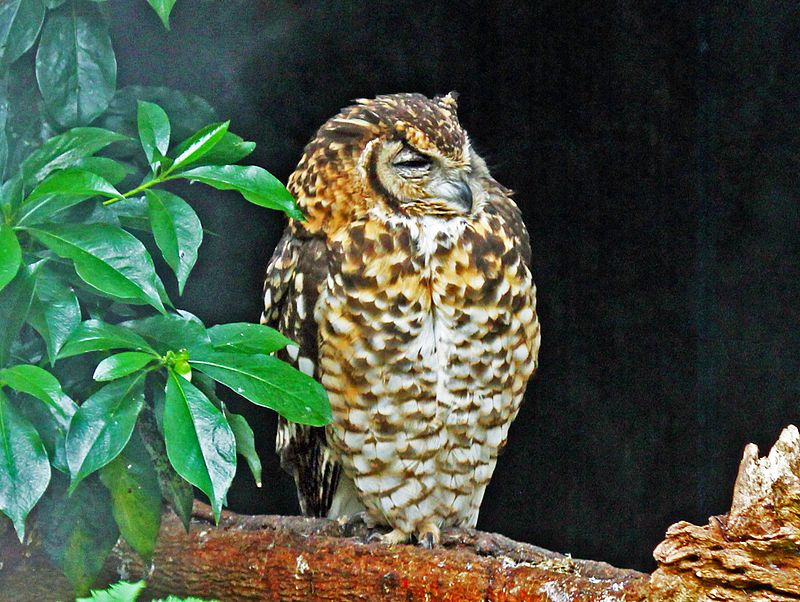
The Cape eagle-owl is a species of owl that belongs to the family Strigidae. It is native to parts of Africa, such as South Africa, and is one of the largest species of owl in the world, with a wingspan of up to 1.5 meters.
This species of owl is a part of the eagle-owl genus Bubo, which includes several other large owl species. The Cape eagle-owl is a nocturnal bird, meaning that it is most active at night.
It is an opportunistic hunter, feeding on a variety of small mammals and reptiles, as well as some invertebrates. The Cape eagle-owl is a fairly social species of owl, and pairs are often seen together, often in their nests.
This species is also known to have a distinctive call, which is a series of deep, hollow-sounding hoots.
Despite its large size, the Cape eagle-owl is still vulnerable to predation, and its population is declining due to a variety of threats, such as habitat destruction and persecution.
| Kingdom | Animalia |
| Phylum | Chordata |
| Class | Aves |
| Order | Strigiformes |
| Family | Strigidae |
| Genus | Bubo |
| Species | B. capensis |
17. Heerman’s Gull
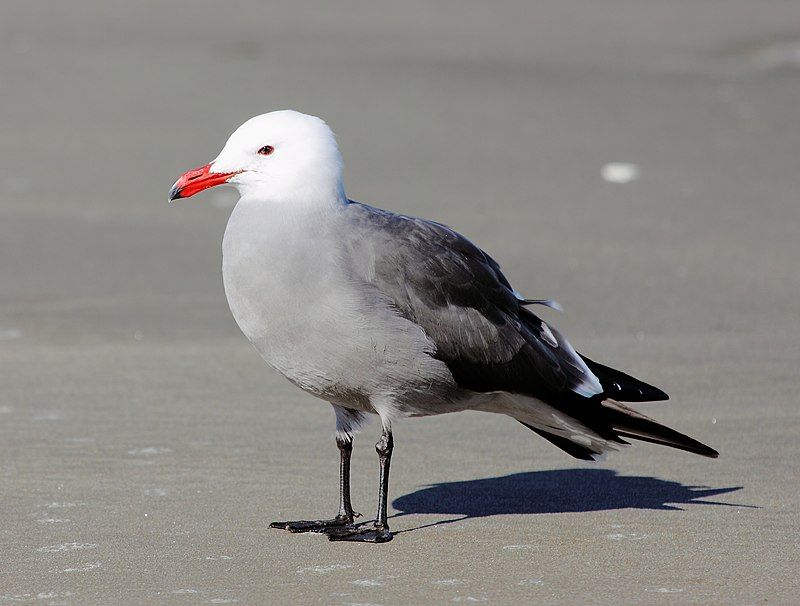
Heermann’s gull is a species of gull found in the United States, Mexico, and extreme southwestern British Columbia. They tend to live near the shore and out at sea, rarely straying far inland. The majority of them nest on Isla Rasa, an island in the Gulf of California.
These gulls are small and gray, with black wingtips and a black-tipped yellow bill. They are mainly found around the coasts of the Pacific Ocean, although they may occasionally venture further out to sea. They feed mainly on small fish, crustaceans, and other marine life.
They also scavenge food from around human settlements and beaches. During the breeding season, they form large colonies on Isla Rasa and other islands in the area. They use the same nesting sites year after year, often building their nests on the ground or in low vegetation.
They lay two or three eggs, and both parents take part in incubating them. The chicks are able to leave the nest after about a month. Heermann’s gulls are not considered endangered, and their numbers have been increasing in recent years.
| Kingdom | Animalia |
| Phylum | Chordata |
| Class | Aves |
| Order | Charadriiformes |
| Family | Laridae |
| Genus | Larus |
| Species | L. heermanni |
Conclusion
Birds are an integral part of the Marina ecosystem, providing important ecological services such as seed dispersal and pest control. They also bring joy to many people who appreciate them for their beauty and distinctive songs.
Therefore, it is important to protect and conserve our local bird species, in order to ensure their continued presence in the Marina.